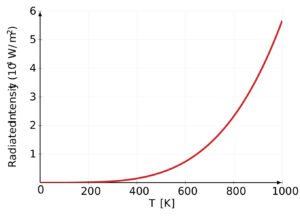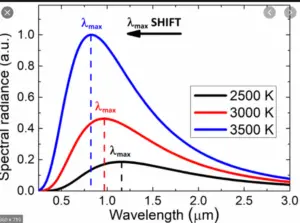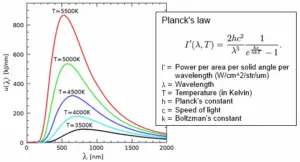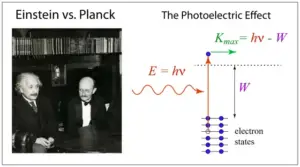In the study of atoms and elements, two essential concepts emerge isobars and isotopes. Isobars are atoms of different elements with the same total number of protons and neutrons i.e. mass number but different atomic numbers. On the other hand, isotopes are atoms of the same element that have the same number of protons but different numbers of neutrons.
Isobars have the same mass but different chemical properties because of their different atomic numbers. They are found in different positions on the periodic table, representing the diversity of elements.
Isotopes, on the other hand, have the same atomic number, so they have similar chemical properties. However, they have different atomic masses, which can affect their stability, radioactivity, and behavior in nuclear reactions. In this article, we will discuss isobars and isotopes in detail, so stay tuned with us till the end…
What are isobars?
Isobars definition: Isobars are the atoms of different elements that have the same total number of nucleons (mass numbers), which includes both protons and neutrons. This means that isobars have the same mass number, but they differ in their atomic number.
To understand isobars, let’s consider an example. Carbon-14 and Nitrogen-14 are isobars. Carbon-14 has 6 protons and 8 neutrons, giving it a total of 14 nucleons. Nitrogen-14, on the other hand, has 7 protons and 7 neutrons, also totaling 14 nucleons. Both elements have the same mass number of 14, but they have different atomic numbers (6 for carbon and 7 for nitrogen).
Because isobars have different atomic numbers, they are distinct elements with different chemical properties. They occupy different positions on the periodic table and exhibit different behaviors in chemical reactions. This is because the atomic number determines the number of protons in the nucleus, which influences the element’s chemical characteristics, such as its reactivity and bonding behavior.
What are isotopes?
Isotopes definition: Isotopes are the atoms of the same element that have the same atomic number, meaning they have the same number of protons, but differ in their mass number due to a varying number of neutrons in their nuclei.
Let’s consider an example to understand isotopes better. Carbon has three isotopes: Carbon-12, Carbon-13, and Carbon-14. All three isotopes have 6 protons (which defines them as carbon) but differ in the number of neutrons. Carbon-12 has 6 neutrons, Carbon-13 has 7 neutrons, and Carbon-14 has 8 neutrons.
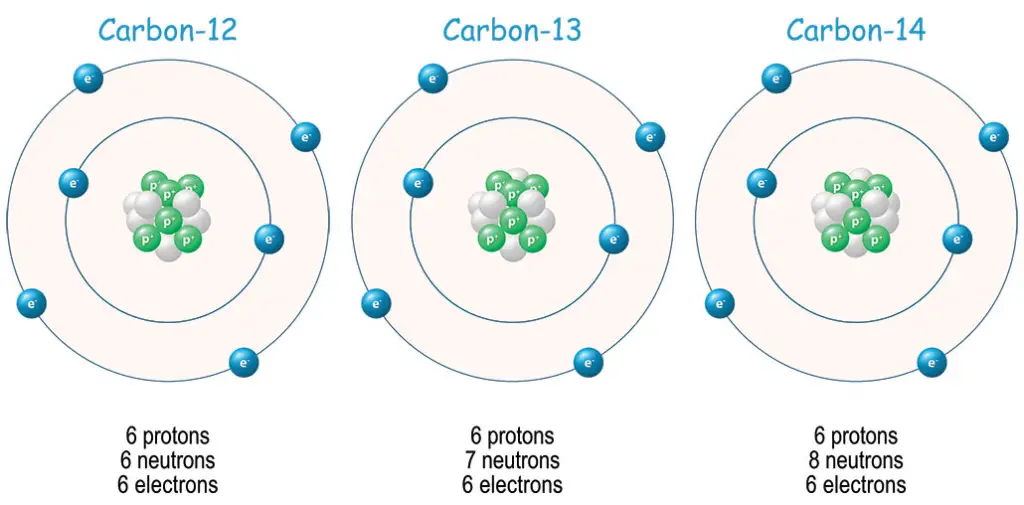
Isotopes share similar chemical properties because they have the same number of protons, which determines an element’s chemical behavior. For example, all carbon isotopes will react similarly in chemical reactions and form the same types of compounds.
However, isotopes may have slightly different physical properties due to their differing mass numbers. For instance, Carbon-12 is the most abundant isotope and is considered the standard for atomic mass. Carbon-13 and Carbon-14, being slightly heavier due to extra neutrons, may have different stability characteristics or exhibit radioactive behavior.
The study of isotopes is essential in various fields. For example, in archaeology and geology, scientists can determine the age of artifacts and rocks by analyzing the ratio of isotopes present. In medicine, isotopes are used in imaging techniques and cancer treatments. Isotopes also play an important role in nuclear power generation and understanding atomic reactions.
Read Also
Examples of isobars and isotopes
Examples of isobars and isotopes are given below:
Examples of isobars
- Oxygen-15 (15O) and Nitrogen-15 (15N): Both have a mass number of 15, but different atomic numbers. Oxygen-15 has 8 protons and 7 neutrons, while Nitrogen-15 has 7 protons and 8 neutrons.
- Argon-40 (40Ar) and Calcium-40 (40Ca): Both have a mass number of 40, but different atomic numbers. Argon-40 has 18 protons and 22 neutrons, while Calcium-40 has 20 protons and 20 neutrons.
- Chlorine-36 (36Cl) and Sulfur-36 (36S): Both have a mass number of 36, but different atomic numbers. Chlorine-36 has 17 protons and 19 neutrons, while Sulfur-36 has 16 protons and 20 neutrons.
- Potassium-39 (39K) and Argon-39 (39Ar): Both have a mass number of 39, but different atomic numbers. Potassium-39 has 19 protons and 20 neutrons, while Argon-39 has 18 protons and 21 neutrons.
- Sodium-24 (24Na) and Magnesium-24 (24Mg): Both have a mass number of 24, but different atomic numbers. Sodium-24 has 11 protons and 13 neutrons, while Magnesium-24 has 12 protons and 12 neutrons.

Examples of isotopes
- Hydrogen Isotopes:
- Protium (1H): Contains a single proton and no neutrons.
- Deuterium (2H): Contains a single proton and one neutron.
- Tritium (3H): Contains a single proton and two neutrons.
- Carbon Isotopes:
- Carbon-12 (12C): Contains 6 protons and 6 neutrons.
- Carbon-13 (13C): Contains 6 protons and 7 neutrons.
- Carbon-14 (14C): Contains 6 protons and 8 neutrons.
- Uranium Isotopes:
- Uranium-235 (235U): Contains 92 protons and 143 neutrons.
- Uranium-238 (238U): Contains 92 protons and 146 neutrons.
- Oxygen Isotopes:
- Oxygen-16 (16O): Contains 8 protons and 8 neutrons.
- Oxygen-17 (17O): Contains 8 protons and 9 neutrons.
- Oxygen-18 (18O): Contains 8 protons and 10 neutrons.
These examples show the presence of isobars and isotopes in different elements. Isobars have the same mass number but different atomic numbers, while isotopes have the same atomic number but different mass numbers due to varying numbers of neutrons in their nuclei.
Read Also:
- Discovery of Electron class 11: chemistry, NCERT
- Discovery of proton class 11: chemistry NCERT
- Discovery of Neutron class 11: history, properties, observations, and Conclusions
- Millikan oil drop experiment class 11: history, apparatus, procedure, observation
Difference between isobars and isotopes
The key differences between isotopes and isobars are given below:
| Criteria | Isotopes | Isobars |
|---|---|---|
| Definition | Atoms of the same element with the same atomic number (number of protons) but different mass number (number of protons + neutrons). | Different elements with the same mass number (total number of protons and neutrons) but different atomic numbers (number of protons). |
| Example | Carbon-12, Carbon-13, Carbon-14 | Carbon-14, Nitrogen-14 |
| Mass Number | May have slightly different physical properties due to different mass numbers. | Same among isobars. |
| Atomic Number | Same among isotopes of the same element. | Differs among isobars. |
| Chemical Properties | Similar chemical properties due to the same number of protons. | Different chemical properties due to different atomic numbers. |
| Position on the Periodic Table | Same element, so same position on the periodic table. | Different elements, so different positions on the periodic table. |
| Physical Properties | Dating artifacts, medical imaging, nuclear power, and understanding nuclear reactions. | Not directly related to physical properties. |
| Applications | Dating artifacts, medical imaging, nuclear power, and understanding atomic reactions. | Understanding the diversity of elements, chemical reactions, and the periodic table. |
This table highlights the key differences between isotopes and isobars, including their definitions, examples, mass numbers, atomic numbers, chemical properties, positions on the periodic table, physical properties, and applications.
Frequently Asked Questions – FAQs
What are isobars?
Isobars are different elements that have the same mass number but different atomic numbers. In other words, they have the same total number of protons and neutrons but differ in the number of protons.
What are isotopes?
Isotopes are atoms of the same element that have the same atomic number (number of protons) but different mass numbers (number of protons + neutrons). They have the same number of protons but differ in the number of neutrons.
How do isobars and isotopes differ from each other?
Isobars are different elements with the same mass number but different atomic numbers, whereas isotopes are different forms of the same element with the same atomic number but different mass numbers.
What is the significance of isobars and isotopes?
Isobars highlight the diversity of elements and their distinct chemical properties, while isotopes contribute to our understanding of the atomic structure, dating techniques, medical imaging, and nuclear reactions.
How are isobars and isotopes represented?
Isobars are represented by elements with different atomic symbols but the same mass number, for example, 40Ar, and 40Ca.
Isotopes are represented by the element’s symbol followed by the mass number as a superscript and atomic number as a subscript, for example, 16O, 17O, and 18O.
Can isotopes have different chemical properties?
No, isotopes have similar chemical properties since they have the same number of protons, which determines the element’s chemical behavior. However, they may exhibit slight variations in physical properties due to their different mass numbers.
Stay tuned with Laws Of Nature for more useful and interesting content.



